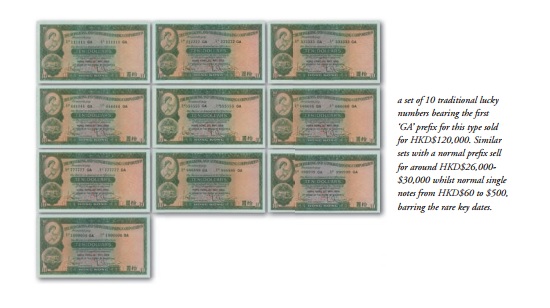INSIDER 29 | SPECIAL FEATURES | Collecting ‘Lucky’ ‘Number Notes in Asia
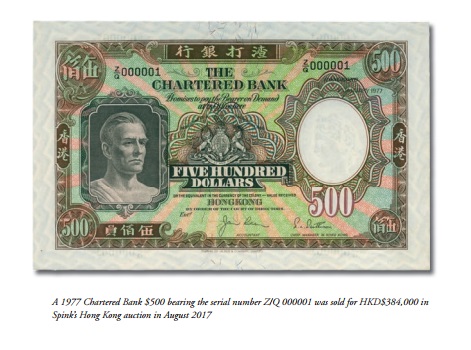
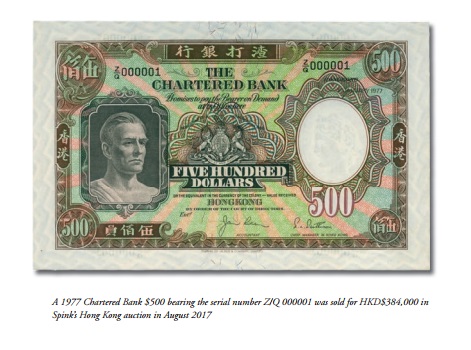
By Kelvin Cheung
Lucky number banknotes have always been a popular collecting theme in the Far East. When I started to collect banknotes in earnest in the early 2000’s I always sought them out as a priority. The first thing all burgeoning collectors must be clear on is what defines a ‘lucky’ number?
Definition and types:
In my opinion, the traditional lucky numbers are number 1’s, solid 1’s to solid 9’s, 1 million (or equivalent of the last note in the prefix run) and the ascending/descending serial numbers that start with ‘1’ and ‘9’ respectively (123456/654321 and not 234567/765432). This makes a total of 13 notes within a prefix run.
In recent years, however, the local market has evolved to include the following fancy/semi lucky number varieties:
Using the prefix as part of the number e.g. BB888888 will be seen as ‘eight 8s’, GG666666 will be seen as ‘eight 6s’. The prefix itself is sometimes a collecting theme as a ‘replacement’, ‘first prefix’, ‘first sub-series’ etc. But this topic is beyond the scope of this article. The above all command a healthy premium over notes with ‘normal’ serial numbers.
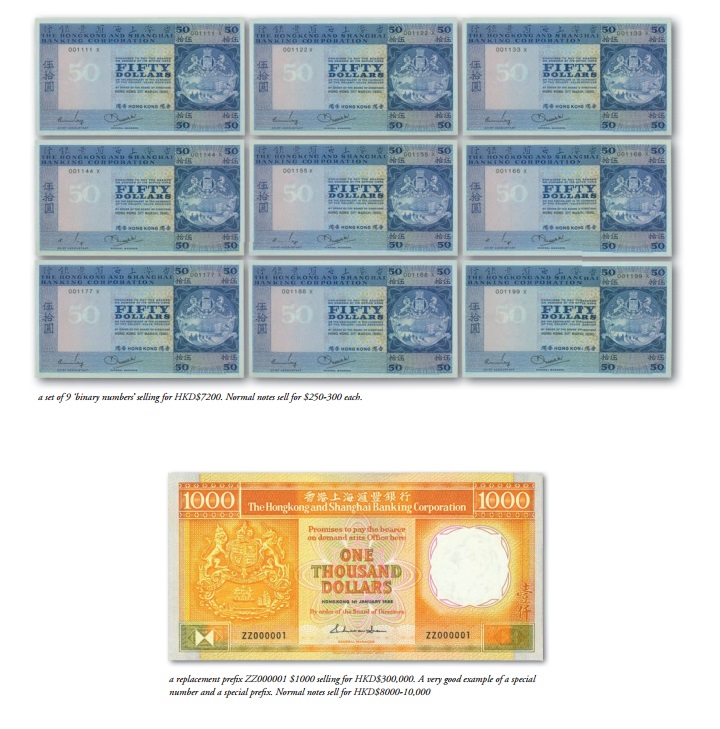
What is point? The most obvious answer to this question is value. Traditionally, lucky numbers command a very large premium compared to that of a normal note. For example, Spink China sold a 1985 $1000 with the serial number ZZ000001 in January 2017 for HKD$300,000 compared to $15000 for a note with a normal serial number. However, within the traditional lucky numbers a large difference exists. The list below gives a ranking from most to least desired numbers for notes of the same value issued in the same year and in the same condition.
888888 – the most desired since the pronunciation of ‘8’ in Chinese is similar to ‘wealth’
1000000 – Valuable because it is the only note with a 7 digit serial number and no longer issued in Hong Kong
000001 – The smallest number and ‘number 1’
999999 – 9’s are popular because the pronunciation is the same as ‘forever’ which extrapolates to longevity.
333333 – 3’s are popular because the pronunciation is similar to that for ‘life’
666666 – 6’s translates to ‘liu liu da shun’ (liu is the pronunciation for 6 and the phrase loosely means the six harmonies). Explanations for this saying could be one of the following:
555555 – no special meaning but the large the digit the better, hence:
222222
111111
777777 – Not popular because the pronunciation for ‘7’ is similar to ‘misery’
444444 – Not popular because the pronunciation for ‘4’ is similar to ‘death’
123456, 654321 – I can only guess these are not popular because they are not as aesthetically pleasing as they others.
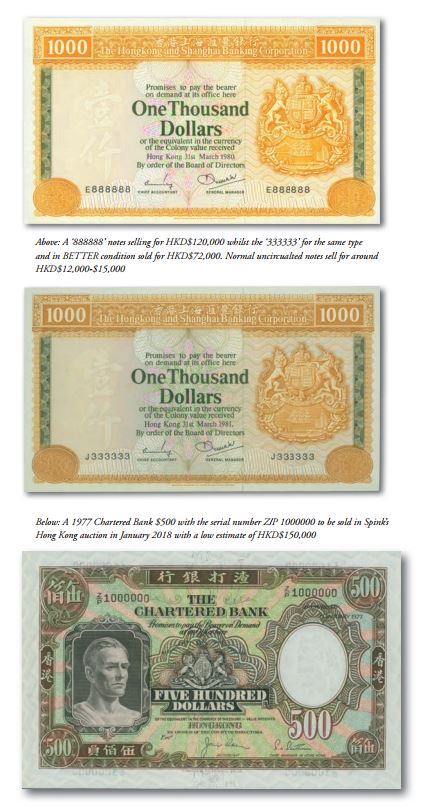
‘Lucky’ numbers create a new cohort of collectors and since prices have risen steadily over the last 10 years or so new collectors have started to buy the fancy numbers as they are still relatively cheap. This ‘market within a market’ is healthy as it enables novice collectors to collect economically and gradually advance to serious collecting. Having more and more young collectors join in this hobby is a good sign for the future of collectables.

I hope this article serves as a basic introduction to ‘number’ collecting in the Far East with a definition of what they are, why there is a growing market and the reasons for differences in price. As prices for good quality, vintage banknotes are growing beyond the reach of some people, having a new collector’s market in lucky/fancy serial numbers is important for the future of our hobby. This is very evident in the charity sales conducted by our London team for the Bank of England, Bank of Scotland and Clydesdale Bank. The banks have very kindly provided us with special number banknotes for auction and the high prices reached were, in part, due to Far Eastern bidders.
